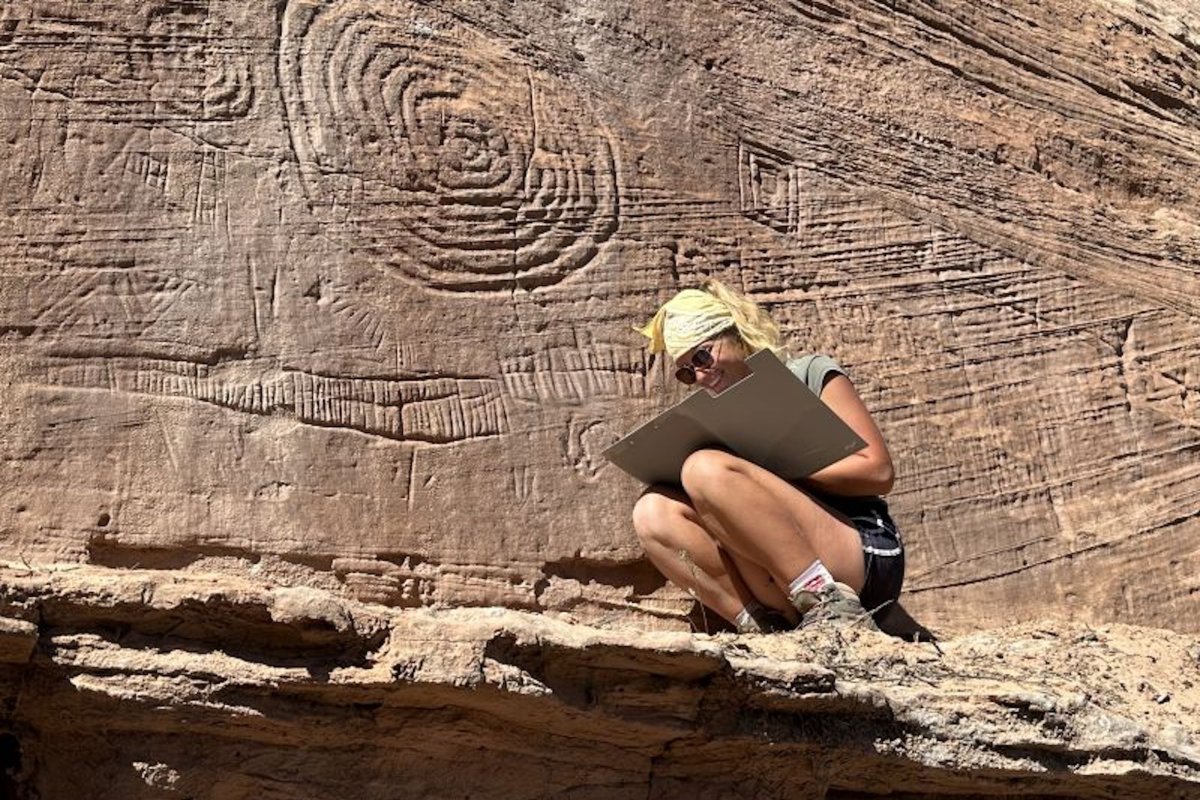Archaeologists have discovered a set of ancient Native American artworks carved into rock at a site on the border between Colorado and Utah.
The rock carvings were created by the Ancestral Puebloans, a Native American culture whose history appears to stretch back more than 3,000 years.
The ancient Puebloans were present in what is now southeastern Utah, northeastern Arizona, northwestern New Mexico and southwestern Colorado. This region, which is still inhabited by the descendants of this culture, is home to a large number of ancient Pueblo settlements and rock art sites.
"The agricultural Pueblo communities developed one of the most advanced Pre-Columbian cultures in North America," said Radosław Palonka from the Institute of Archaeology at the Jagiellonian University in Poland, who has been investigating historic Pueblo sites for more than a dozen years, said in a press release.

"They perfected the craft of building multi-storey stone houses, resembling medieval town houses or even later blocks of flats. The Pueblo people were also famous for their rock art, intricately ornamented jewellery, and ceramics bearing different motifs painted with a black pigment on white background."
Palonka and colleagues have been conducting research in the area of an ancient settlement complex known as Castle Rock Pueblo, which is located on the picturesque Mesa Verde plateau on the border between Colorado and Utah.
Castle Rock Pueblo was a village that was inhabited from around A.D. 1260 until sometime during the 1280s. The surrounding area, characterized by three canyons, contains the remains of dozens of ancient Pueblo sites, all dating roughly to the 13th century—of which Castle Rock was the biggest—as well as numerous artworks on the rocks, boulders and canyon walls.
Investigations conducted by Palonka and colleagues this year between September and October have revealed previously unknown findings in the area.
"I used to think that we studied this area thoroughly, conducting full-scale excavations, geophysical surveying and digitalization," Palonka said. "Yet, I had some hints from older members of the local community that something more can be found in the higher, less accessible parts of the canyons. We wanted to verify this information, and what we found surpassed our wildest expectations."
During their investigations, the archaeologists identified numerous previously unknown petroglyphs—or rock carvings—on huge rock panels stretching more than two-and-a-half miles around the large plateau in the upper part of one of the canyons.
"This season was very productive," Palonka told Newsweek. "In the upper part of Sand Canyon, we found previously unrecorded, or some only briefly recorded panels, with many geometric designs including spirals, but also images of sandals, birds and other animal tracks, anthropomorphs, and many others."
The spiral shapes, which measure up to around 3 feet in diameter, could have been used by the Puebloans for astronomical observations and to determine the dates of special days in the calendar, such as the spring and autumn equinoxes, according to Palonka.
"Astronomical observations and phenomena were very important for the Ancestral Puebloan people, but also for historic and modern Puebloans," he said. "But we have to remember that the spirals could also mean something else. [They] could be symbols of wind, water, sun, or migration."
The petroglyphs could be dated to the 13th century—the same age as the Castle Rock settlement complex.
"Our findings from the current year completely change our perception of this settlement area in many different aspects," Palonka said in the press release. "Definitely we have underestimated the number of inhabitants who lived here in the 13th century and the complexity of their religious practices, which must have also taken place next to these outdoor panels."
Update 12/21/23, 9:04 a.m. ET: This story was updated with comment from Radosław Palonka.
Uncommon Knowledge
Newsweek is committed to challenging conventional wisdom and finding connections in the search for common ground.
Newsweek is committed to challenging conventional wisdom and finding connections in the search for common ground.
About the writer
Aristos is a Newsweek science reporter with the London, U.K., bureau. He reports on science and health topics, including; animal, ... Read more





